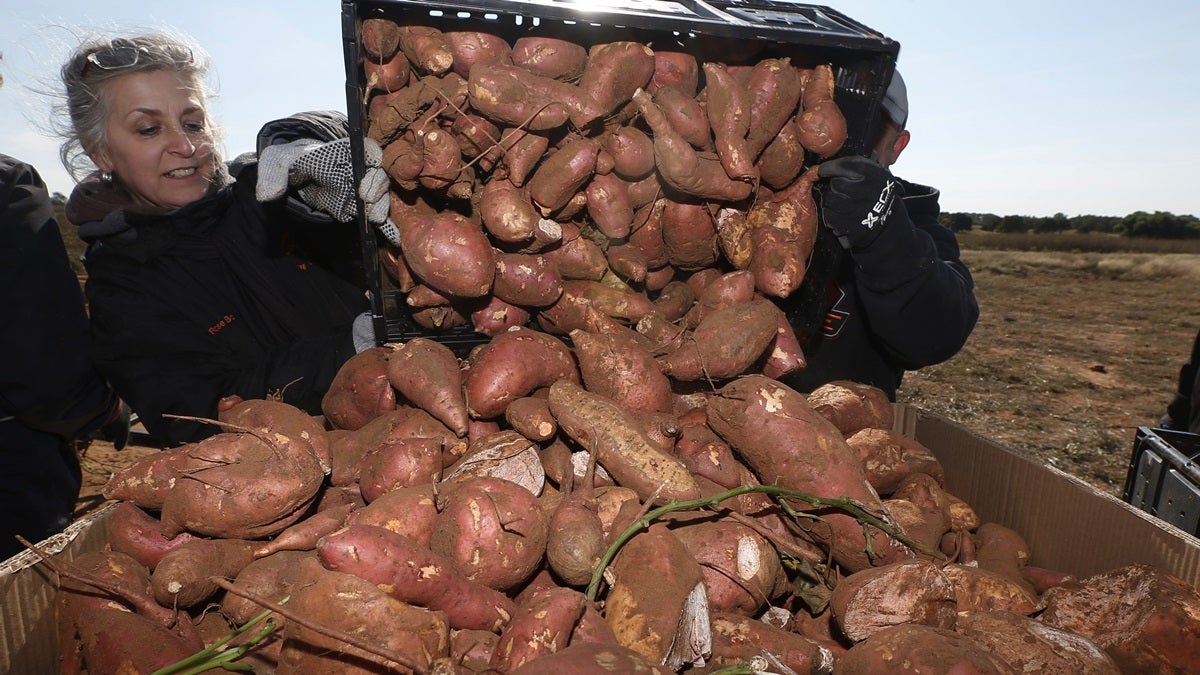Delaware’s once booming sweet potato industry

(AP Photo/Sue Ogrocki)
A tale of Thanksgivings past, the rise and sudden fall of the sweet potato as king of First State crops.
These days, broiler chickens dominate the Delaware agricultural landscape. Chicken houses dot the countryside throughout central and southern Delaware. But decades ago the sweet potato, a Thanksgiving dinner staple, was the pride and joy of First State farmers. While sweet potatoes no longer command the respect they once did among Delaware agricultural exports, some of the houses they were stored in are now recognized as historic landmarks.
The capability of Delaware soil to produce high quality sweet potatoes dates as far back as 1868 when the Delaware State Directory listed: “the sweet potatoes of Southern Delaware, have a richness and sweetness of flavor, which we do not find in the California potato nor even those grown on the rich, fresh soils of Texas.”
That directory recommended that farmers grow 100 times as many sweet potatoes as they were currently growing, “The farmers of Sussex County, instead of growing a few bushels for their own use…ought to supply in a great measure the markets of Philadelphia and New York.”
Farmers followed through on the call for greater sweet potato production.
From 1901 to 1920, the average number of bushels grown in Delaware grew to 440,000 per year. That’s a four-fold increase over prior decades. In 1920, Delaware farmers planted more than 9,800 acres of sweet potatoes. Despite Delaware’s small size, the state ranked as the 14th largest sweet potato producer in 1920.
“Sweet potatoes as a cash crop were huge here,” said Russ McCabe, retired Delaware State Archivist. “The particular soil and climate we have here is conducive to the production of particularly sweet, sweet potatoes.”
Sweet potatoes rose in value for Delaware farmers through about 1940. That’s when the black rot, a highly destructive root disease, decimated the potato crops. “When we think of a potato blight today we think of Ireland in the 1840s,” said McCabe. “Many Delaware farmers who had invested significantly in sweet potato production lost their shirts as a result of Mother Nature’s hand.”
By comparison, there are very few Delaware sweet potato farmers today. In 2012, Delaware had seven farms growing sweet potatoes on 20 acres, according to the 2012 Census of Agriculture. Those are the most recent numbers available from the National Agricultural Statistics Service, part of the U.S. Department of Agriculture. The previous census done in 2007 showed ten farms growing just ten acres of sweet potatoes.
But some symbols of the sweet potato heyday remain in Delaware. A handful of sweet potato houses are still standing in southern Delaware. Because sweet potatoes need to be cured after they’re harvested in the fall through the winter months, the houses are designed to be kept at a constant temperature. “That’s how important it was,” said McCabe. “You had to heat [the house] to a certain temperature. In those days, they were normally heated with coal stoves.”
In 1988, Delaware’s sweet potato houses were nominated for addition to the National Historic Registry by Judith Quinn and Bernard Herman at the University of Delaware. Their nomination describes a typical sweet potato house as “a tall (two or three story), narrowly proportioned frame building heated with either a coal or wood burning stove. The buildings typically present gable-end fronts.”
A dozen sweet potato houses in Sussex County have been added to the registry.
While the crop certainly isn’t what it was nearly 100 years ago, there are some signs of an uptick in sweet potato production. The number of acres produced in 2012 was double what was produced in 2007. And it doesn’t hurt that this Thanksgiving staple is just so tasty. “I’ve eaten them since I was a boy,” said McCabe. “I love them straight up, with butter on them, in a pie, in biscuits. I think there will come a point in time, I believe, when you’ll see a little bit of a return.”
WHYY is your source for fact-based, in-depth journalism and information. As a nonprofit organization, we rely on financial support from readers like you. Please give today.





